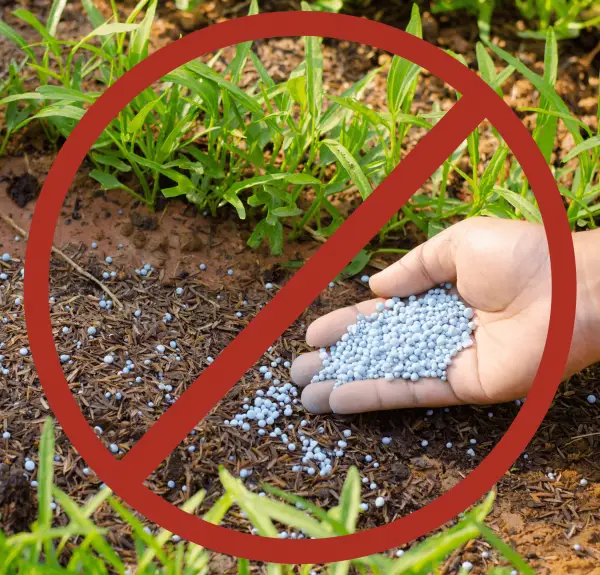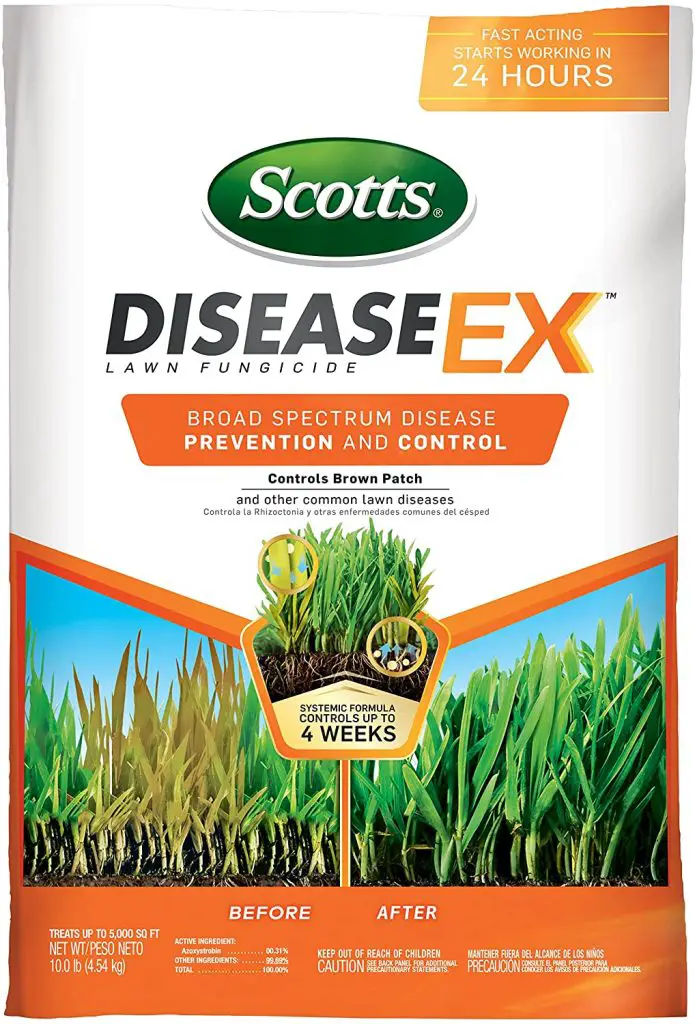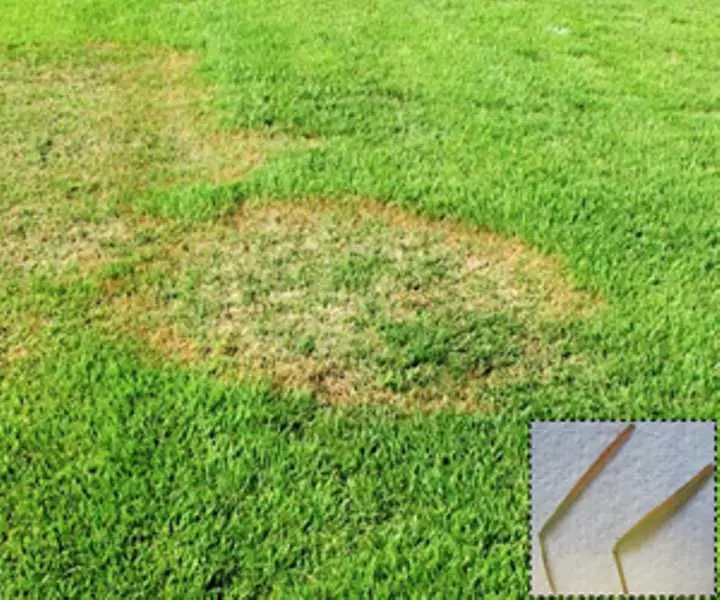Preventing Brown Patch: Do The Basics
Good basic lawn care practices represent the best way to prevent brown patch and other lawn diseases.
the best way to prevent brown patch or large patch in the home lawn is by following good lawn care practices, Clemson HGIC says.
Once you have an outbreak, you really cant treat symptoms, Patton says. Whats already been affected wont be cured overnight.
The best defense for your lawn, as with other pest and disease problems, is a good foundation, he said. the best way to prevent brown patch or large patch in the home lawn is by following good lawn care practices, according to Clemsons guide.
Attention to cultural practices taking proper care of your lawn with regular mowing, proper fertilizing, irrigation, air circulation and weed control help prevent brown patch.
You May Like: Lawn Bare Spot Repair
What Is Brown Patch Lawn Disease
Brown patch lawn disease is caused by the fungus known as Rhizoctonia solani. Certain types of grasses, including tall fescue, bentgrasses, and perennial ryegrass are especially vulnerable to this fungal pathogen, but any turfgrass species may be affected by it. For instance, brown patch lawn disease is a particular problem from Kentucky bluegrass during the hot weather of mid to late summer. Some grass species are more susceptible to brown patch development during early spring or late spring when there are extended periods of rain.
How Do I Treat Brown Spots In My Lawn
Treat a patchy lawn by identifying the problem first. If fungus is to blame, treat it with appropriate fungicides. At the same time, take steps to boost your turfs overall health, such as mowing to a longer length, watering adequately and fertilizing correctly. If you notice problems such as thatch or compacted soil, correct those issues to support healthy grass growth.
Don’t Miss: How To Grow The Best Lawn
How To Get Rid Of Brown Spots In Your Grass
When brown patch settles in, professional help is the fastest and most reliable way to stop it from spreading. At Southern Spray, our lawn care professionals create and maintain healthy lawns all across Tennessee. Well help stop the spread of brown patch disease and give you a green and healthy yard again. Our technicians service Nashville, Memphis, and the surrounding Tennessee and Mississippi areas.
Brown Patch Lawn Disease

This lawn disease is characterised by the round, dying areas in lawns. You will notice round patches measuring between 20 cm to a metre that are enclosed by a darker colour.
Typically, this disease infects lawns with poor lawn health. You will see this problem affect lawns during spring.
The disease is caused by microorganisms that are brought to the lawn by external sources like the shoes of visitors, pets, or even borrowed lawn mowers.
Solution
This problem entails a multi-pronged approach. For starters, you will need to identify the pathogen that is causing the disease and find the appropriate fungicide that will eliminate it.
Next, you will need to change your lawn care practices. That will include: reducing watering and doing it early in the morning removing thatch aerating the lawn, and ensuring that the lawn gets ample sunlight.
Lawn Dollar Spots
Recommended Reading: What Days Can You Water Your Lawn
How To Fix Brown Patch In Lawn
- To prevent spots caused by the nitrogen in dog urine, create a mulch or gravel area in your yard for your dog.
- If your brown spots appear after you mow, check your mower blade. Dull blades shred the grass, which damages the ends that then turn brown.
- In midsummer, check for grubs. And if you find them, apply a grub control product to your lawn.
- Brown patch fungus grows in circular patterns sometimes several feet wide and is generally found during hot, sticky weather. Treat your lawn every other week for 6 weeks with a lawn fungus control product. And water just once a week, since a wet lawn encourages the fungus.
- If you have broad patches of brown, you could have overfed your lawn. Water the burned area every 3 days with at least one-half inch of water for about 4 weeks. And dont fertilize again until the area perks back up.
Related articles:
Recommended Reading: How Long After Lawn Treatment Is It Safe For Pets
Water Your Lawn In The Morning
Read Also: When To Aerate Lawn In Nc
Brown Patch Control: How To Get Rid Of Brown Patch
Brown Patch is a common lawn disease and can become a widespread problem in both residential and commercial lawns. Brown Patch is caused by a fungus called Rhizoctonia solani and can infect many different cool and warm-season grasses.
Brown Patch appears in the form of spotting on the leaf blades which can bleed together to turn the leaf brown and circular areas of brown or dead grass outlined by a narrow, dark ring. Depending on the grass type, Brown Patch can affect the turf differently.
Brown Patch will affect cool-season grasses typically in late spring or during summer when temperatures are hot and humid. Warm season grasses can see brown patch around fall or during warm weather in winter months. This disease can very quickly spread without intervention.
If your lawn has Brown Patch, it can be eliminated by following the steps in this DIY guide which was put together by lawn care experts. Follow our directions carefully and you will be able to restore your lawn and eliminate Brown Patch.
Read Also: I Believe In Manicures Opi
Treating And Preventing Brown Patch Fungus
If your lawn has been previously diagnosed as having brown patch fungus, it is likely that the disease will emerge in the same areas again next fall and early winter. Here is what you can do to help prevent and treat this fungus:
- Brown patch fungus thrives in excessive moisture areas.
- DO NOT apply any type of fertilizer to the lawn during brown patch fungus outbreaks. The Nitrogen in the fertilizer will actually provide more food for the disease to spread further and faster.
- Avoid mowing the affected areas. Mow around them. Do not step or walk on affected areas. If you have a lawn service, ask them to mow the affected area last, so that the clippings are not spread throughout the lawn.
- DO NOT rake out the affected area. Leave it alone. Generally, the damage is topical and only the actual leaves are affected, leaving stolons and rhizomes intact. The grass blades will grow soon after the fungus becomes inactive. Resodding is generally not necessary.
- Keep a watchful eye on the lawn for further outbreak patches. Call us right away when new patches emerge so we can dispatch a technician to your property to treat new area.
You May Like: What Should I Apply To My Lawn Now
Grasses Most Commonly Affected With Brown Spots
Get this! Brown patches are more common in some types of grass than others.
These patches normally start as a small spot, but can quickly spread outwards in a circular or horseshoe pattern several feet wide.
The grasses most commonly affected by brown patches are:
KEEP IN MIND: if you have a crabgrass lawn, you may experience brown patches frequently. If this is the case, you may want to consider selecting a better grass seed.
Catching The Disease Early
The best way to stop the spread of brown patch fungus in your lawn is to follow the guidance in the previous section, as removing the conditions needed by the fungus to grow will force it back into dormancy. If youve just noticed that the fungus has started to grow, you can fight it back by raking and fluffing the grass in the affected area to speed up the drying process. Then, you should apply an organic fertilizer to provide the grass with a healthy dose of nutrients to fight off disease. This Garden Care Organic Fertilizer from Milorganite can be used on your lawn all year round to keep your grass and plants strong and resistant.
You May Like: How To Kill Wild Violet Weeds In Lawn
Read Also: Is Triple 10 Fertilizer Good For Lawns
Brown Spots = Fungal Damage
Fungal damage is a key cause of yellow or brown spots on lawns. In a Zoysia lawn, Rhizoctonia Solani is the name of the fungus that attacks the grass sheathes during cool periods in the fall or spring and often ramps up during hot and humid weather. Fungal damage usually appears in irregular patches and spreads outwards from a central point. You can work to prevent fungal damage by dethatching , aerating, watering deeply but infrequently , and improving runoff. If you have fungal damage, you can try to treat it with a fungicide.
How Do You Get Rid Of Fungus In Your Yard

How to Treat and Heal Lawn Fungus
While costly, this will help battle the lawn fungus. natural treatments can be used instead, especially while the fungus is still small. Neem oil, compost tea, and baking soda solutions are some of the most common.
Also, will vinegar kill lawn fungus? Vinegar SprayVinegar contains acetic acid, which is strong enough to damage and kill fungus. Unfortunately, it is also strong enough to hurt grass in a lawn already weakened by fungal infection.
Furthermore, will lawn fungus go away on its own?
Unfortunately, lawn fungus will not disappear if left untreated. The most effective way to manage yard fungus is to use a fungicide and practice good turf management. Make sure to avoid overusing fungicide to prevent additional damage to your grass.
How do I know if my lawn has fungus?
When your lawn develops a fungus, sections of your grass will change color. For instance, brown, purple, white, or yellow spots may appear. Reddish-brown rings are another sign that your lawn has a fungus, as are black threads. Thin, frayed, discolored, or distorted grass blades also point to this type of lawn disease.
Also Check: How To Improve Lawn Grass
What Causes Brown Patch
Brown patch is actually a fungus, specifically the widespread Rhizoctonia Solani. While brown patch fungus seems to appear overnight, the fungus spores can lie dormant in even the healthiest soil for years. During this time, its inactive and causes no harm to your grass but is simply waiting for the ideal conditions to spread. Once those conditions arrive though, the spores activate, causing brown patches in your lawn. The commonality of the fungus and its patient nature mean that most varieties of turfgrass are vulnerable to an infestation. .
Also Check: Where Can I Get My Lawn Mower Serviced
Brown Spots In Grass: Identification And Prevention
No one wants unsightly brown spots taking over their once-green stretch of lush, green lawn. But in order to solve this problem, you have to know exactly what youre dealing with. There are multiple causes of brown spots, from poor soil quality to dog urine and over-fertilization. But dont fret. This Old House will show you how to identify the brown spots in your grass, repair them, and prevent them.
Once youve taken care of your brown spot, This Old House Reviews Team recommends hiring a professional lawn care company to handle all of your lawn care needs to keep your grass hardy and robust. TruGreen offers five annual plans with options like overseeding and aeration that can help you avoid brown spots.
Don’t Miss: How Large Is My Lawn
Let Turfs Up Help You Identify And Prevent
Ready to learn why Turfs Up could be your totally awesome choice for lawn care disease control services in Purcellville, Waterford, and Round Hill, Virginia? Were stoked to learn more about you and help you have the best lawn on the block. Get started today with a free quote. Together, we can prepare a customized plan that is perfect for you and your lawn.
You May Like: What Industry Is Lawn Care In
Professional Services To Save You Time
With so many tasks requiring your attention every day, giving your lawn the special care it needs can be a challenge in every season. Because we know how busy you are, we offer professional lawn care in Dallas that take care of everything, including the control of diseases like brown patch on your lawn.
Dont let the hot Texas climate damage your lawn, when the professionals at Gecko Green can keep your grass healthy and vibrant with our year-round services!
If you want a lush green lawn you can take pride in all year, learn more about our year-round lawn program today!
Also Check: How Long Before Pets Can Go On Treated Lawn
Revitalize Your Lawn With Crowley Landscape Management
At Crowley Landscape Management, our team of professional landscape designers and architects install and maintain gardens for residences and commercial properties throughout the Portland metro area.
Read our blog for more landscaping tips and tricks or contact us today to request your complimentary on-site consultation.
Also Check: How To Revive Brown Lawn
Brown Patch Disease Of Lawns Introduction
The beauty of a lawn can be quickly destroyed by brown patch , a serious fungal disease that can affect all South Texas lawn grasses. It can develop rapidly when temperatures are warm and humid, especially during warmer periods of the fall and winter months. Warm-season grasses such as St. Augustine , Bermuda, and Zoysia are most commonly affected by brown patch during the early spring and late fall.
SymptomsSymptoms of brown patch may vary greatly with the type of grass and soil conditions. The disease usually causes thinned patches of light brown grass that are roughly circular in shape. These areas range in diameter from a few inches to several feet. Often the center of the patch will recover, resulting in a doughnut-shaped pattern.
When disease conditions are favorable, large areas of the lawn may be uniformly thinned and eventually killed with no circular patch being evident. This type of pattern is commonly seen on infected St. Augustine grass grown in shady, moist locations.
Close inspection of grass blades reveals small, irregular, tan leaf spots with dark-brown borders in combination of rotted leaf sheaths near the soil surface.
Prevention and TreatmentThe best way to prevent brown patch in the home lawn is by following good lawn care practices. This is much easier and less expensive than the use of fungicides and can be very effective.
Table 1. Chemicals for Control of Brown Patch
| Fungicides |
Don’t Miss: Where To Buy Gypsum For Lawns
How To Treat Brown Patches In Lawn
Proper mowing, watering, and fertilising help limit the risk of fungus in grass. However, if you already have brown patches or other fungal issues, you need to address the problem to keep it from spreading.
Some fungal diseases can continue to spread until they destroy a lawn. Use the following steps to treat the problem:
- Use a fungicide to kill the fungus
- Collect grass clippings when you mow
- Avoid excess foot traffic on the lawn
- Repeat the treatments if the fungus returns
The fungal disease may not go away on its own. Apply a fungicide to kill the fungus and begin restoring the health of your grass.
What Type Of Grass Is Most Susceptible To Brown Patch

Brown Patch lawn disease is a common and widespread problem caused by Rhizoctonia solani fungus. The disease can infect a variety of common turfgrasses, but the most susceptible grass species include perennial ryegrass, tall fescue and the bentgrasses.
Brown Patch can also become a problem to Kentucky bluegrasses in mid-to-late summer during extended periods of high temperature and humidity.
Recommended Reading: Where To Buy Zero Turn Lawn Mowers
Here Is Paul’s Strategy
In Paul’s Video, he lays out a strategy like this:
- Azoxystrobin is the first active ingredient and we can get at local stores in the form of Scotts DiseaseEx.
- Propiconazole is the second and we can get that in a hose end option from Bio Advanced.
If you have active disease in the lawn this is your first step to success in overcoming it.NOTE: This plan works for any disease in any lawn, not just brown patchGet this application down to stop the disease from progressing further.Put these both down on the same day and get them watered in – ¼ .You may need a second application of both 14 days later if humid, still air persists, but there is more you can do to help things clear up.The cost of each is about $20 at the store and that covers 5,000 sq ft. So consider about $40 per application if you have a 5,000 sq ft lawn.
2. The second piece of the puzzle is about oxygenating the soil and getting microbes to help us in recovery. Paul mentions applying Humic Acid, sea kelp, and micronutrients.Im sure he has his own recipe/cocktail mix that he uses, and we also have available to use some tools that will work the same way and in fact, the Bio-Stimulant Pack is perfect for this.